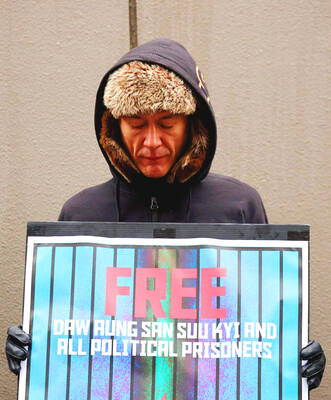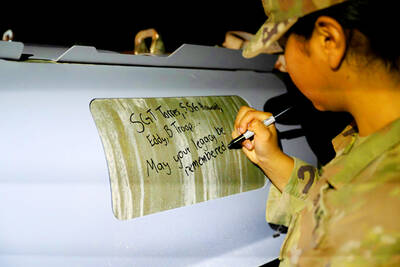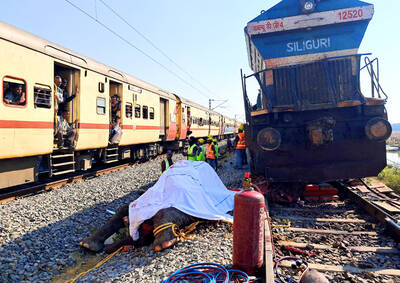The UN Security Council, acknowledging the failure of the current strategy for ending the carnage in Darfur, Sudan, agreed on Friday to deploy thousands of peacekeepers to the troubled province.
The US, which holds the council presidency this month, offered the motion, and it was approved unanimously. Officials acknowledged that winning council approval was probably the least difficult step.
The Sudanese government opposes the presence of UN troops in Darfur, and UN officials say it will not be easy to persuade member nations to contribute troops for the new Darfur force. The US has no intention of sending combat troops, officials said.
Assuming those and other challenges are overcome, the first UN troops are not likely to arrive in Darfur for almost a year.
"It's a complicated and operationally, logistically difficult mission," said John Bolton, the US ambassador to the UN.
Still, said Jendayi Frazer, assistant secretary of state for African affairs, "we need to arrest the deteriorating security situation there." At least 30,000 residents of Darfur have been driven from their homes in the last month alone, UN officials said.
The violent and chaotic situation in Darfur poses significant risks that troops would be drawn into firefights with Sudanese government troops and Darfur rebels.
But under the plan, said Kristen Silverberg, another assistant secretary of state, UN troops would be better-armed than the African Union troops patrolling Darfur now. They would also be given new rules of engagement that would allow them to "protect civilians and enforce the cease-fire."
The troops will be given "a robust mandate," Silverberg said.
US and UN officials said they expected the UN force to absorb the 7,000 African Union troops already there, rearm them and then increase the total troop presence to a level between 12,000 and 20,000. More than 200,000 residents of Darfur have been killed since the violence began three years ago, and as many as 3 million rely on international aid for basic sustenance.
In 2004, the US, the UN, the EU and the African Union agreed to send African Union troops to enforce a ceasefire in Darfur, although it broke down almost as soon as it was agreed upon.
Over the following two years, troops from several African nations took up posts in Sudan. But they carried only AK-47 assault rifles and operated under rules of engagement that did not allow them to enter the conflict.
It did not take long for the government troops and Darfur rebel forces to realize that the African Union peacekeepers were a scant deterrent. Starting last summer, the violence began to pick up again. By fall, the peacekeepers became targets; four were killed in October, another last month.
One African Union officer, interviewed in a Darfur military camp in November, complained that "we are sacrificial lambs in a buffer zone."

The Burmese junta has said that detained former leader Aung San Suu Kyi is “in good health,” a day after her son said he has received little information about the 80-year-old’s condition and fears she could die without him knowing. In an interview in Tokyo earlier this week, Kim Aris said he had not heard from his mother in years and believes she is being held incommunicado in the capital, Naypyidaw. Aung San Suu Kyi, a Nobel Peace Prize laureate, was detained after a 2021 military coup that ousted her elected civilian government and sparked a civil war. She is serving a

REVENGE: Trump said he had the support of the Syrian government for the strikes, which took place in response to an Islamic State attack on US soldiers last week The US launched large-scale airstrikes on more than 70 targets across Syria, the Pentagon said on Friday, fulfilling US President Donald Trump’s vow to strike back after the killing of two US soldiers. “This is not the beginning of a war — it is a declaration of vengeance,” US Secretary of Defense Pete Hegseth wrote on social media. “Today, we hunted and we killed our enemies. Lots of them. And we will continue.” The US Central Command said that fighter jets, attack helicopters and artillery targeted ISIS infrastructure and weapon sites. “All terrorists who are evil enough to attack Americans are hereby warned

Seven wild Asiatic elephants were killed and a calf was injured when a high-speed passenger train collided with a herd crossing the tracks in India’s northeastern state of Assam early yesterday, local authorities said. The train driver spotted the herd of about 100 elephants and used the emergency brakes, but the train still hit some of the animals, Indian Railways spokesman Kapinjal Kishore Sharma told reporters. Five train coaches and the engine derailed following the impact, but there were no human casualties, Sharma said. Veterinarians carried out autopsies on the dead elephants, which were to be buried later in the day. The accident site

RUSHED: The US pushed for the October deal to be ready for a ceremony with Trump, but sometimes it takes time to create an agreement that can hold, a Thai official said Defense officials from Thailand and Cambodia are to meet tomorrow to discuss the possibility of resuming a ceasefire between the two countries, Thailand’s top diplomat said yesterday, as border fighting entered a third week. A ceasefire agreement in October was rushed to ensure it could be witnessed by US President Donald Trump and lacked sufficient details to ensure the deal to end the armed conflict would hold, Thai Minister of Foreign Affairs Sihasak Phuangketkeow said after an ASEAN foreign ministers’ meeting in Kuala Lumpur. The two countries agreed to hold talks using their General Border Committee, an established bilateral mechanism, with Thailand